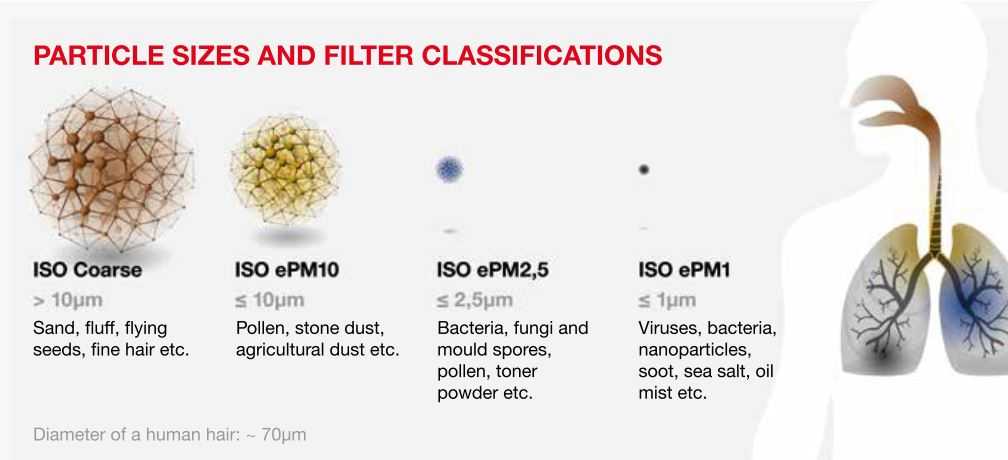How have the standards changed since EN 779
The new standard, ISO 16890 (ISO), supersedes the previous standard EN 779, with regard to filter assessment and classification since August 2016 and was published in 2017. It officially replaced EN 779 when it came into force on the 1st of July 2018. ISO tests the performance of the filters and their ability to filter out particulates from air coming through a ventilation system.
ISO 16890 at a glance
The ISO 16890 standard is said to be a realistic assessment of filter performance and measures the ability of the filter to stop different sizes of particulates from penetrating a ventilation system and entering an indoor climate. EN779, the previous standard, only measured a single particle size of 0.4μm to assess filter performance; yet fine dust such as soot or pollen comes in varying sizes.
In addition, ISO now divides filters into four classes which have the ability to filter a certain particle span out of the air. In order to be assigned a category, except for ISO Coarse, a filter must separate at least 50% of the respective particle size. ISO Coarse filters can separate less than 50% of the particulates.
Filters are classified as:
- ISO Coarse: Ability to filter particulates greater than 10μm in size. This includes larger particles such as sand, fluff, flying seeds or fine hair.
- ISO ePM10: Ability to prevent particles between 10μm to 2.5μm in size. Smaller than ISO Coarse particulates, they typically come in the form of pollen, stone dust or agricultural dust.
- ISO ePM2.5: Prevent even smaller sized particulates, less than 2.5μm in size; fungi, mold spores, pollen or toner powder are all able to be filtered out.
- ISO ePM1: The most effective filter, having the ability to prevent air-borne sea salt, oil mist or other particles smaller than 1μm from penetrating through the filter. An example of the ISO ePM1 (previously F7) filter would be used with Zehnder’s ComfoAir Q MVHR system.
Why specifying the correct filter is important
An average person inhales up to 15kg of air per day. Should there be a high concentration of fine particles in the air, such as spores or soot, the body can be directly affected. Once inhaled, they can affect our sleep, concentration and overall health. When Zehnder developed their filtration systems, performance was of great importance for this very reason.
When selecting an MVHR system filter for a development or refurbishment project, it is vital the appropriate classification of filter is supported, to meet necessary requirements depending on what the building may be exposed to.
Do I need a new filter with the introduction of ISO 16890?
Even prior to the introduction of the new measurement standards, all of Zehnder’s filtration solutions were fully compliant with all the new requirements – only the measurability is new.
If you are using Zehnder’s filters that have the old EN 779 standards (G4/F7 for example), do not worry – they can still be used.

